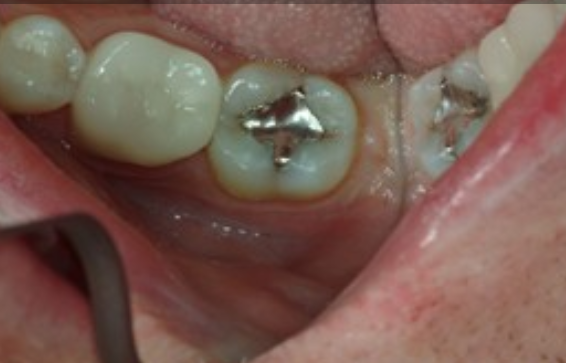Grabill Family Dentistry is committed to putting our patients first. This is why we have decided to no longer utilize dental amalgam along with incorporating a Mercury Safe removal protocol. We offer dental material biocompatibility testing along with mercury free and BPA-free composite resin filling materials to ensure patient health. Due to the high amount of mercury vapor discharge when silver fillings are removed, we abide by the Mercury Safe removal protocol (SMART) to ensure safety for our patients and our dental team. For more information on SMART watch the video below or go to IAOMT (International Academy of Oral Medicine and Toxicology).
Monday - Friday | 8 AM to 5 PM

Mercury Safe Dentistry
SERVICES
Safe Mercury Removal
SMART Recommendations
Silver Fillings Background
Silver fillings, also known as dental amalgam fillings, are composed of mercury, silver, copper, tin, and sometimes zinc. All silver fillings contain approximately 45-55% mercury. Liquid mercury is used as a bonding component that fastens all the other alloy particles together into a durable filling. This material has been used for more than 150 years in order to fill cavities created by tooth decay. This practice is still commonly used in traditional dentistry throughout the United States among other countries around the world.


Are Silver Fillings Safe?
Mercury is a toxic poison that poses major health threats and environmental concerns. Scientific research has shown for years that the mercury component in silver fillings consistently leaks out low vapor levels which is mostly retained in the body. The amount of vapors actually intensifies whenever you chew, grind your teeth, or drink something warm. Mercury is also released during the filling process and removal of silver fillings. The FDA recognizes the benefits of silver fillings as durability and affordability, being the least expensive filling material, and claims limited to no health risks.
However, the International Academy of Oral Medicine and Toxicology’s research and studies have concluded that the use of mercury in silver fillings poses serious risks to human health along with lasting damage to wildlife and our environment. There has been much controversy regarding evidential studies if silver fillings are a safe practice or not.
Even though American dental schools and the American Dental Association continue to claim no health or environmental risks, many other institutions have argued the contrary. The United Nations Environment Program has begun a global effort to reduce mercury usage, including in silver fillings, which some countries have already joined and banned dental mercury.
SMART – Safe Mercury Amalgam Removal Technique
The SMART Mercury Safe removal protocol was created by IAOMT to ensure safety for patients and dental staff. Improper removal of silver fillings can result in extreme mercury toxicity vapors that are over one hundred times stronger than than the maximum levels of mercury vapor allowed by all government regulatory agencies.
We fully utilize the comprehensive SMART method, which includes:
- Proper installation of an amalgam separator in order to fully collect mercury waste
- Ensuring the procedure takes place in a high-volume air filtrated room that’s capable of removing all mercury vapors and filling particles
- Proper protective gowns and covers for everyone involved in the procedure
- Our staff utilize non-latex nitrile gloves, proper face shields, as well as properly sealed, respiratory grade masks designed specifically to capture mercury vapors
- Our patients are protected in an impermeable barrier that protects both skin and clothing
- External air source is delivered via nasal mask for our patients to ensure they don’t inhale any mercury vapors
- Dental dams and saliva ejectors are placed in the patient’s mouth to further reduce mercury exposure
- We utilize a special, high speed mercury vacuum as well as copious amounts of water to reduce head
Hear from Our Patients
Thank you so much for removing my amalgam fillings safely today! You guys are awesome to work with. I will recommend you guys to anyone. Thank you so much!
Ruth Y. - Facebook
Qualified
Dr. Kolkman was awarded his Fellowship in the AGD by amassing over 1,000 hours of continuing education in the areas of cosmetics, sedation, implants, and biological dentistry. Additionally, our office is one of only two in NE Indiana certified by the IAOMT in safe mercury amalgam removal.
Comfortable
Netflix, headphones, remote control. Or, perhaps you’re the eye-mask, earplugs, and weighted blanket – type. Either way, with our ever-expanding comfort menu, relaxing environment, and calming team; you’ll agree, we are on a mission to erase dental phobia!
Compassionate
We get it. You hate the dentist. You’ve been trained to loathe the very word and everything associated with it. That’s exactly what inspired us to rethink how we do what we do. Our practice is guided by a no judgement mentality. Our mission is quite simple: to help you be a better you.
Why Wait? Schedule Now!
Complete our easy online scheduling form by clicking the link below. Or, call our office at (260) 627-1211 and our team will be happy to assist you.
Please do not use this form to cancel or change an existing appointment.

